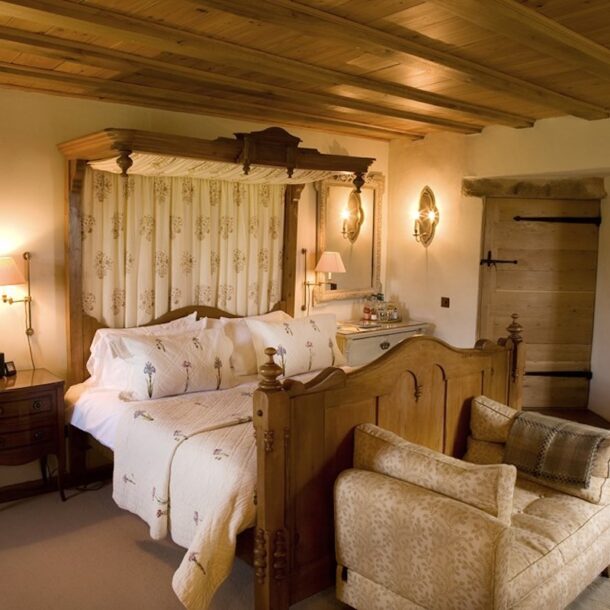

Close

Edward Stafford, 3rd Duke of Buckingham was born under the pall of treason. His father had raised an army to challenge the king. His coup failed, and he was beheaded. Buckingham was just five years old when his father died. A bounty hung over his child’s head and loyal friends hid him away.
Buckingham’s family felt the warm light of royal favor once again once the Tudors ascended to the throne. He grew up to be both the richest and most threatening of the Tudors’ subjects. He had royal blood, and that made him dangerous. Whispers circled the paranoid King Henry VIII that his dashing cousin might claim the throne if he died without a male heir.
Buckingham displayed his wealth. He dazzled foreign ambassadors and English lords alike with the splendor of his wardrobe. When he attended the wedding of Prince Andrew and Katherine of Aragon, his clothing cost £1,500, or £730,000 in today’s currency. He was both a scholar and an extravagant host, and perhaps the first truly Renaissance nobleman in England. He maintained minstrels, harpists, trumpeters, wrestlers, actors, poets, a bear, a fool, and a retinue of gypsies. He presided over prolonged, lavish parties, displaying riches that rivaled even the Crown’s.
Buckingham wanted to build a seat proportionate to his power, wealth, and royal lineage. He gained a license to fortify his manor at Thornbury and started to build the castle in 1511. He chose the style of a Medieval fortress, with crossbow loopholes and gun ports lining the lower story of his outer courtyard. He laid out spacious barracks so that he could rouse armed men on short notice. Thornbury is magnificent even though Buckingham did not survive to complete it. He planned to build four towers, but completed only one. There, he and his wife, Eleanor, lived in magnificent apartments overlooking a manicured ornamental garden.
Buckingham built two turreted gatehouses at the entrance to Thornbury. The gatehouses were monuments to his royal blood and illustrious ancestors. He adorned them with the golden knot of the Staffords, the swan and antelope of the Bohuns, and the burning wheel of the Woodstocks. He inscribed his motto, “Dorenesavant” – the Old French for “From now on, henceforth or hereafter” on the gates.
Buckingham criticized Henry VIII’s foreign policy and recklessly displayed his power. When he retained a royal knight into his service, Henry VIII fumed. Buckingham, stained by the king’s displeasure, retreated from the Tudor court to Thornbury. But perhaps his fatal error was to ask the king’s permission to raise an army to keep his fractious Welsh tenants under control. Henry VIII already suspected that Buckingham fortified Thornbury to prepare for a coup. After all, Buckingham’s father had raised an army in Wales when he attempted to depose the king in 1483. A request for an army affirmed Henry VIII’s fears although Buckingham had every reason to fear his Welsh tenants.
Henry VIII ordered his advisors to find witnesses who could testify that his suspicions were true. They had no trouble finding men among Buckingham’s servants willing to testify against their master. Buckingham threatened his underlings with lawsuits and imprisonment when they could not meet the exactitudes of his whims. He held his servants’ common blood in contempt, and they knew it. And if they did not betray Buckingham, they faced torture.
Henry VIII questioned the witnesses against Buckingham personally. They testified that Buckingham had listened to a Carthusian monk who prophesied that the king would die without any male heirs. Others attested that he had “conspired and imagined” to shorten the life of the king. Some courtiers quietly complained that the evidence only amounted to hearsay, but no one wanted to brave the wrath of Henry VIII.
Buckingham was beheaded on Tower Hill on May 17, 1521. The people of London cried out in grief as he ascended to the block. Violence broke out to protest the injustice that befell him, but it did not last long. Two years later, an Act of Parliament stripped Buckingham’s heirs of any rights to Thornbury and his many other estates. After Buckingham’s demise, his motto “from now on, henceforth or hereafter” is still carved into stone at Thornbury, but it rings with irony.